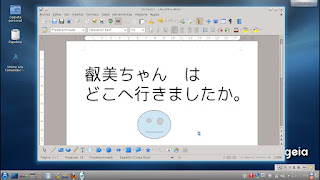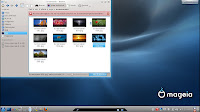Yes, the Alpha 1 of Mandriva 2012 has recently been released. Its code name: Tenacious Underdog!
I dowloaded the i586 .iso to give it a try on a Virtual Machine and see if it works better than Bernie Lomax, its predecessor, did. By the way, the TP ran like a charm in my humble opinion. Can the underdog outperform Bernie?
This is what I saw:
Installation process:
 |
| Say hi to the crazy penguin |
The process is as simple as it gets. As usual. By the way, I do not agree with the idea that the presence of this penguin weakens the perception one can have of the distribution. After all, computers should not be so serious. Gimme games, Easter eggs, funny names, and the crazy penguin. Let's bring back the joy of using a computer, shall we?
 |
| I like the penguin family! It looks like mine... |
This is a nice feature. Here, it is possible to install many different packages right from the start. Some might think that this scares newbies away. Well, this non-technical Linux user simply drools over the options and checks all that seems interesting.
 |
| This is familiar territory |
After completing some intuitive questions, the distro takes some time to install...
 |
| Oops! The Spanish installation failed... |
*UPDATE: Per Øyvind Karlsen has fixed this issue already!
 | |
| The English install worked perfectly |
This time, everything went as expected.
Desktop:
After the install, you see the same elegant log in screen that Mandriva 2011 brought. Paradoxically, my account avatar is a cat.
 |
| You guessed it; I'm not a dog person... |
 |
| This is the default desktop |
 |
| The desktop wearing something more appropriate |
Final observations:
This release includes KDE 4.9.0. It's good to see Mandriva sporting new technologies. Best of all, this desktop environment seems well implemented, which is far more important than just having it.
In the office section, I miss the rest of the LibreOffice suite (only Writer and Calc are present). Not a big deal; you can download the rest from the repos.
Ah, but my personal test is the factor that determines if I will continue being a Mandriva user or not. Can it handle Japanese input?
The answer is YES!
 |
| iBus + Anthy work flawlessly. |
To Per Øyvind Karlsen and all Mandriva developers, thank you for your hard work. I'm truly looking forward to seeing the final 2012 release. Judging from the quality of TP and Alpha 1, I'm sure that Mandriva 2012 will conquer my PC, putting an end to the long reign of Mandriva 2010.2.









